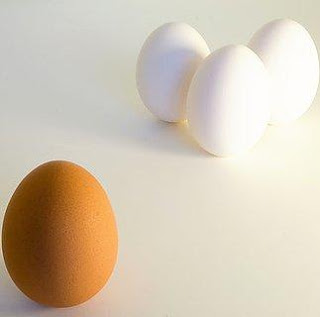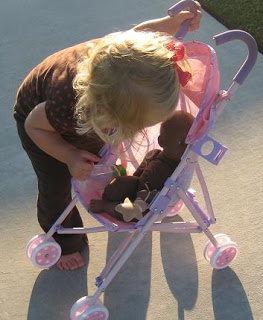 DEF: xenophopbia [zen-uh-foh-bee-uh] noun : a fear of that which is unknown, typically used to describe general dislike of people different from oneself.
DEF: xenophopbia [zen-uh-foh-bee-uh] noun : a fear of that which is unknown, typically used to describe general dislike of people different from oneself.
I used to like the idea that kids are colorblind. I love the vision of American being this great melting pot where kids of every race play together in perfect harmony. I think we are getting there. But as my kids are getting older, I’ve begun to realize that children do, in fact, notice race. I’ve even had the sinking feeling as I’ve observed playground interactions that Jafta is sometimes excluded because he looks different. When he is with his long-time friends who know him well, this is not the case. But when he is the new kids on the playground, kids are very wary of playing with him, where they may be more welcoming of another white child. He had a really difficult time with being left out at his very vanilla preschool at first, and I think this was a factor, too.
I thought I was just being paranoid until I started doing some research on it. A simple seach on race and exclusion yielded dozens of recent studies on the impact of race in preschool and elementary school. The findings were scary: race is one of the biggest factors in children being left out by their peers. It’s as impactful as gender, physical differences, and even cognitive ability.
I’m not sure why I was so naive to think my own kids didn’t notice these differences. I feel like I have done a good job of exposing my kids to lots of cultural diversity. But they let me know in subtle ways. I was mortified when my son pointed to a Mexican man who was bagging our groceries and asked what that gardener was doing. He also yells “hey neighbor” to any woman he sees wearing a head covering, because there is a Muslim woman who lives across the street. And my daughter? At only 18 months old, she displayed her observation of racial differences. We attend a gospel choir rehearsal at an African American church, and my daughter begins enthusiastically singing one of the songs every time she sees a group of Black people. Um, awkward!
The truth is, at the age that most children begin to notice gender differences, they also begin to notice race. I think many of us are unaware of this, because it can be subject we inadvertently avoid. We want our kids to be “colorblind”, so we pretend not to notice differences and encourage them do to the same. But in doing so, we might miss some important conversations. (Like pointing out that not ALL Mexicans are gardeners). If we avoid the subject, we leave our kids to their own assumptions that are often based on a lack of exposure.
I have a few friends who decided to broach the subject of race with their children, and they were shocked at what they found. One child expressed how glad she was that her skin was light because lighter was prettier. Another child said, point-blank, that he didn’t like kids with brown skin. Another parent decided to just observe her son at their next park outing. She watched her child allow a white child into the circle to share sand toys, but tell a Mexican child he had to play elsewhere.
Now, let me point out that these are not bad, abnormal, or cruel kids. These are sweet kids from amazing families, just expressing a typical (albeit flawed) developmental preference for similarity. A child who is wary of children who look different is not a racist in the making, any more than a child who wants to play with kids of their own gender is a budding sexist. These are normal developmental stages. However, like many “normal” childhood traits (impulsivity, selfishness, etc), this brand of xenophobia may need some gentle guidance and education from parents.
So what’s a parent to do? Here are a few things we’ve been trying at my house:
1. Take an inventory of your home’s diversity. Are your toys sending a subtle message? Make it a point to buy dolls and action figures of every race. Watch how your kids react.
2. Be intentional in showing your children positive examples of other races in the media they watch. Some great examples are Go, Diego, Go!, Little Bill, Ni Hao, Kai-Lan, Dora the Explorer, and Cooking for Kids with Luis.
3. Take inventory of your own racial biases. Be careful with the language you use around your children. Avoid making stereotypical statements or racial jokes in front of your children. (or better yet, don’t do it at all). 
4. Look for opportunities to immerse your family in other cultures. Try to find situations where your family is the minority. This is a great stretching and empathy building opportunity for you and your kids. Try attending a minority church event or a cultural festival. Again, observe your child’s reactions and open a dialogue about how that feels.
5. Read books that depict children from other races and countries. Some of our favorites are We’re Different, We’re the Same, The Colors of Us , and Whoever You Are (Reading Rainbow Book) . For an incredible list of multi-cultural children’s books, check out Shades of Love at Shelfari.com.
6. Just observe. Watch how your children plays with children who are different, whether it be skin color, gender, disability, or physical differences. Talk about it. Let your child know that you are a safe person to process their feelings and reactions with, while at the same time guiding them to accept children with differences.
7. Lead by example. Widen your circle of friends and acquaintances to include people from different backgrounds, cultures and experiences.

Great post, Kirsten.
One thing I would point out is that most people of color do not want a color blind society. This notion came from white privilege where we want “the other” to fit in the dominant mainstream culture…. which is most often white.
On the continuum, “color blind” is also considered a form of racism. Moving down the continuum, allowing everyone to have their own culture and to actually notice race and to embrace the similarities and the differences is a really good thing. For me personally, I don’t want a color blind society, I want a multi-cultural society.
I don’t think Jafta saying “hey neighbor” or India singing songs when she sees black people is a bad thing. That is mere association that has nothing to do with racism. It’s judgments that come along side those associations that become dangerous. I wonder if we as adults are the ones that impose this filter on kids. For example, the Mexican man that mows the lawns or bags the groceries can be seen as having a “less than” career, whereas Jafta wouldn’t know that. Does that make sense?
You bring up some great points of it being human nature to gravitate toward the similar. Interesting how that starts at a very young age.
Some of your suggestions were great, too. I like your intentionality.
Thanks for posting this.
Diane
Good post as well.
My children are 4 and 2 and my four year old is for sure seeing color. I don’t know that i would say he sees race, b/c i’m not sure he would know what that was. he says he likes vanilla ice cream b/c he’s white and tells his 2 year old brother (he can still do that since he’s only 2!) that he should like chocolate since he’s brown.
he says that deacon is one color of brown and amos is a different brown.
not sure that he would know what white people and black people are though.
make sense?
i love the idea of making sure your kids are exposed to everyone. isn’t that a weird thing that we have to make a conscious effort to do that.
before we check out books at the library i’m always looking to make sure all the characters aren’t white!
we love handy manny stuff and diego and dora.
I CAN NOT stand it when i hear people make negative comments about other races in front of their kids. YOu are right, they shouldn’t say it at all, but especially in front of their kids. they are guiding their thoughts when they do that.
we have a NO TOLERANCE rule in our home to anyone making racial comments even in joking. I don’t even want our kids to hear a asian person making fun of asian people. NOT when they are so young that they don’t know that he is asian and so he’s making fun of himself. make sense?
anyhow … it is way too late and i hope these comments made sense. great post.
Jamie, yes, I guess my kids notice color as opposed to race – they aren’t really old enough either. I’ve been wondering recently how to explain the black/white thing to Jafta. He calls himself brown, because that’s the actual color. He calls me tan (I wish). But when do I explain that society calls him black (even though he’s brown)? I don’t know.
Ooh, and yes, Handy Manny! That’s another good one!
Kristen,
great post… my 2 yr old just started noticing the gender thing BIG time, but not race yet. Im tying to add diversity to their world through dolls/books/ conversations etc… all in anticipation for their new black brother.
Donica
Great post, thanks for sharing. I think it is important.
I told my son the other day that we were going to see the African Children's Choir and he said but we don't speak African. I had to explain that the kids will sing some songs in Engligh and some songs in their native langauge and while we may not understand the language the songs will be very pretty. He wasn't being racist he just didn't understand.
Oops, scary research I never thought of doing. As someone who has brought up brown kids in both England and America, I was unaware of this research. Sigh!
Thanks for sharing it!
Great post. This is such an important topic. I am not a mother yet, but I have worked in elementary and middle school classrooms in the U.S. and primary and secondary schools in Tanzania using a teaching methodology called Litercay Through Photography (LTP). LTP is a tool to help kids improve self expression, creativity, and critical thinking. One of the most interesting projects is called Black Self White Self, and it is an exploration of race. I worked with middle school students in North Carolina on this project, and it was fascinating the discussions that came from the project regarding racial stereotypes, stereotypes in general, why stereotypes exist, racial identity, etc. You can read more about this project in this book. There is a whole chapter that covers it.
http://www.amazon.com/Literacy-Justice-Through-Photography-Classroom/dp/0807752819
Nurture Shock has a chapter on this topic. The author's talk about intentionally teaching our kids about diversity instead of simply exposing them to it and assuming they get it. http://www.amazon.ca/NurtureShock-New-Thinking-About-Children/dp/0446504130/ref=sr_1_1?s=books&ie=UTF8&qid=1363704856&sr=1-1
Thanks for this post and the ideas listed at the end. I was so mortified today when my three-year-old pointed out the "dark" child on the playground, I cried on the drive home. It's reassuring to know that some of this is normal, but it's also a reminder that we have to be deliberate in talking about race and racism.